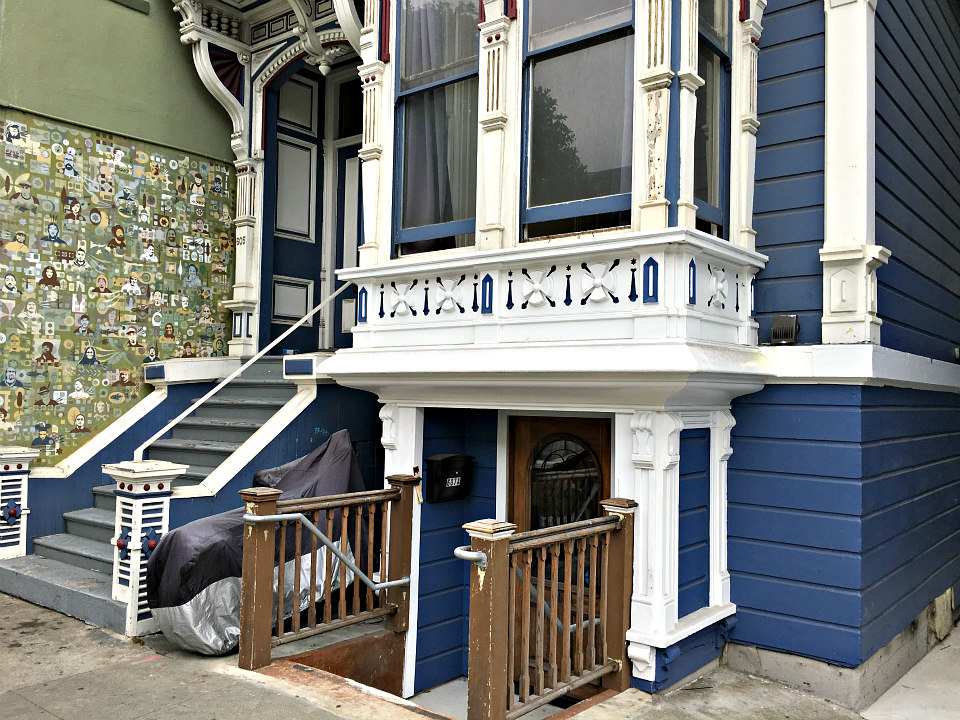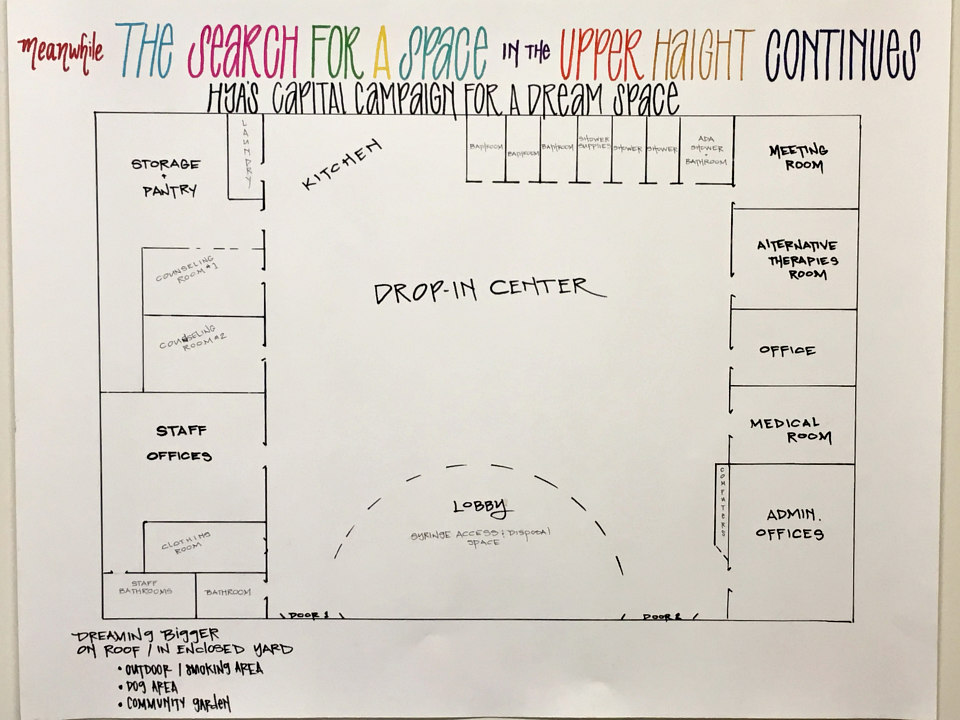
The last time we spoke with Mary Howe, executive director of the Homeless Youth Alliance, it was in a coffee shop. The time before that, it was on the sidewalk. But last week, we were finally able to meet Howe at her desk—in HYA’s new office in the Lower Haight.
We first reported in January that HYA, which lost its Upper Haight drop-in center in 2013 and spent years working out of a supporter's dining room, had secured the former Vapor Room space at 607A Haight St. to open up an administrative office.
However, after a long review process with the city’s Planning Department, further delayed by a discretionary review filed (and later withdrawn) by a small contingent of Lower Haight Merchants and Neighbors Association members, HYA wasn’t able to officially move in until the second week of August—nearly seven months after signing its lease and beginning to pay rent.
“We definitely feel like we’re part of this neighborhood,” said Howe. “But the time and resources spent arguing the legitimacy of having an office space was such a waste, and could have been put into a permanent solution.”

Howe told us that after working out of a dining room for the past two years, having an office feels “weird.” But she also said that the move has been good for her colleagues. “For the staff to have their own desks and their own phones, and to have a staff meeting area, it feels really amazing,” said Howe.
Many neighbors and local businesses have also continued to support the nonprofit. Last month, Wing Wings hosted a chicken-wing eating contest, raising over $3,500 for HYA.
“We support HYA in the neighborhood 100 percent because they provide crucial services for the homeless in San Francisco, especially for marginalized youth,” wrote owner Christian Ciscle. “We love what they do.”

Logistically, things have not been as amazing for HYA’s outreach efforts, which mainly take place a mile down the street in the Upper Haight, where the organization works with homeless and at-risk youth.
The organization was rejected from more than 100 spaces in the Haight back when it hoped to reopen its drop-in center, and even after it began seeking a purely administrative office, it struggled to find a space.
“It’s been challenging to not be as close, and to constantly be riding the bus back and forth," said Howe, who notes that the distance gap has cut down on the amount of time she and her team are able to spend with the youth they serve. "It’s very valuable to have a legitimate office space, but logistically it’s really difficult.”
Nonetheless, HYA remains committed to its mission. “We’re doing housing applications on the street, doing birth certificate things out of a van, counseling on the sidewalks," she said. "All of these things that should really be done indoors."

“A youth drop-in center in the Haight—that’s still the big dream," said Howe. “[The administrative office] doesn’t really have the impact on the community that having a drop-in center would."
To those who believe that a drop-in center would attract crime, drug use, and at-risk youth, Howe has this to say: "A drop-in center would give youth somewhere to go so they’re not on people’s doorsteps or on the street—that’s a win for everyone. And for the youth, it gives them a space to be—to take a shower, to talk to a counselor, and to have a door to have a private conversation.”
“We as a city can do better for our young people,” said Howe. “And there’s just not enough services, there are not enough beds in the city, there’s no way to even build the amount of housing that we need to house everyone.”









